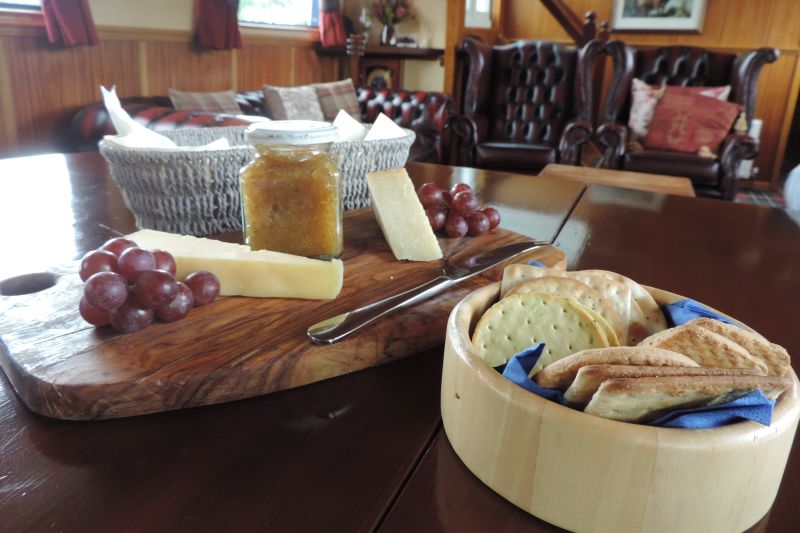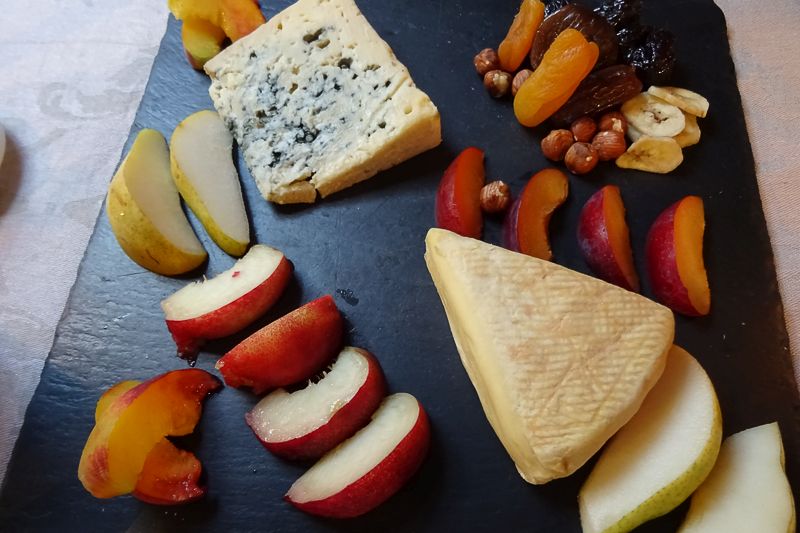Sampling cheese is something that many of us are quite familiar with. Whether it’s a special arrangement of soft cheeses at Christmas or indulging in a camembert and French bread starter, cheese always has a place at the table. Follow our Top 10 Tips for serving cheese to ensure you get the best from your cheese selection.
Top 10 Tips for Serving Cheese

On one of our barge cruises, you will have the chance to sample several varieties and brands of cheese. Each cheese has a story to tell about where it came from and how it was made. However, this is not the only important thing about cheese… Did you know that the true flavour of cheese can be enhanced by the way it is served? Well, we certainly think so! That’s why we’re teaching you everything you need to know to serve cheese!
1. Serve Cheese at Room Temperature
For the utmost in flavour, aroma and texture, serve cheese at room temperature. It is good practice to take cheese out of the fridge at least an hour before serving. Never remove more cheese than you intend to serve, because repeated warming up causes cheese to dry out and deteriorate.
2. Leave the Rind On
When you serve cheese, leave the rind on – even the downy-white rind of soft cheeses. The only exceptions to this rule are some hard cheeses like Gouda and Emmental, which can have an additional coat of wax, plastic, or paraffin on the outside. This coating should be peeled away and discarded to expose the edible rind.

3. Know Your Cheese Knives
How cheese should be served is with its own serving utensil placed alongside it. Each cheese needs its own cheese knife because using one knife for multiple cheeses mixes flavours. Serving and cutting tools can range from a spreader for soft cheeses, to a sharp knife for hard cheese. A special cheese knife has a sharp edge and is tipped with two prongs that are used to spear a cheese that has just been cut.
4. Choose Your Cheeseboard
The plate on which you serve cheese can take many forms. A marble cheese-round is classic, but other choices include a wooden cheeseboard, a granite tile, a slate or a footed cake plate. Really, you can use any flat surface on which the cheese will fit! The only thing you really need to consider is the colour of the serving plate. Make your cheese look good by adding contrast – most cheeses are light-coloured so a dark background is what cheese should be served on.

5. Space Your Cheeses on the Cheeseboard
How the cheese is presented on the cheeseboard generally depends on its size and shape. Wedges or large chunks of cheese should be served as they are, and small rounds of cheese should remain whole. Never put strong cheeses next to milder ones, and arrange the cheeses in the order they should be tasted.
6. Compliment the Flavours in Cheese
Accompaniments for cheese can be arranged on the cheeseboard or served on the side. Sides that go well served with cheese include seasonal fruit, dried fruit, nuts or cured meats. Chutney or mustard can also go well with certain cheeses, like Mature Cheddar or triple-cream cheeses like Brillat-Savarin.

7. Buy Fresh Cut Cheese
Exposure to air diminishes flavours by diffusing the aromas in the cheese. It doesn’t take long for this to happen at all! However, if you’re serving leftover cheese, carefully trim away the outermost half an inch of the cheese to expose the fresher centre.
8. Never Store More than One Cheese Together
Consider buying a roll of cheese paper to re-wrap unfinished cheeses. Cheese paper helps cheeses to breathe without spoiling them or tainting other stored cheeses. If you’re going to finish your cheese within a couple of days then a sealed plastic bag or cling film will suffice.

9. Do Not Freeze Cheese
Without diving into the science of it, freezing cheese obliterates the flavour, smell and texture. Once the cheese comes out of the freezer, you will be left with an unpleasant, dry version of the delicious cheese you once had. Cheese should be served fresh!
10. Don’t Take Cheese Pairing Advice Too Seriously
What beverage pairs well with cheese for one person, may not pair well for another. Wine and cheese are classically paired together, as are cheese and beer. If you fancy being adventurous though, why not try pairing cheddar, beef jerky and scotch? Creativity is key to discover new flavour combinations when you serve cheese!

Barge Cruises with Cheese-Tasting Experiences
Now that we’ve shared our secrets with you on how to serve cheese, you’ll be an expert! If you’d like to find out more about a European Waterways cruise, and enjoy some cheese served to you, then contact our sales team or request a brochure.
 English
English
 Spanish
Spanish French
French German
German Norwegian
Norwegian Portuguese
Portuguese Swedish
Swedish Italian
Italian Russian
Russian Simplified Chinese
Simplified Chinese Japanese
Japanese